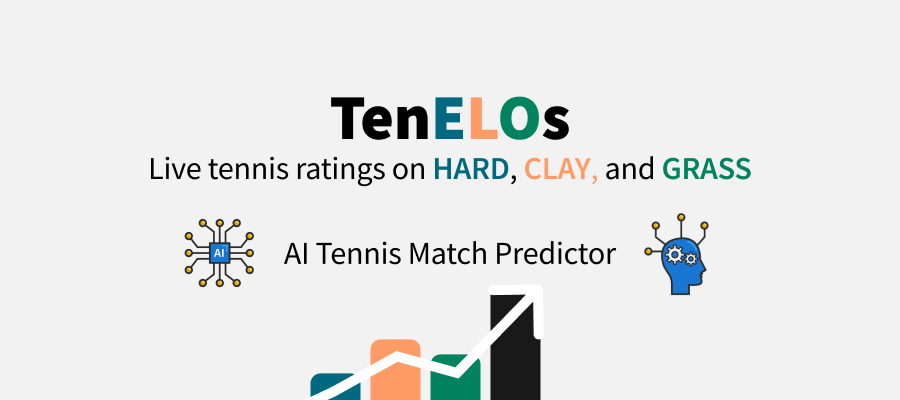
About
Welcome to Live Tennis ELO Ratings, your ultimate destination for men's professional tennis statistics. Our mission is to immerse tennis enthusiasts in the world of tennis with a comprehensive suite of stats and ratings, enabling you to track your favorite players, compare their performances against rivals, and delve deep into the game's nuances—all within a sleek and modern interface.
Designed for ease of use and depth of insight, our platform stands as a testament to our dedication to enriching your tennis experience. Here, every statistic tells a story, allowing you to appreciate the sport's intricacies in a way that is both enjoyable and intuitive. Explore the richness of tennis with Live Tennis ELO Ratings, where we bring the game closer to you.

Photo by Shep McAllister on Unsplash
Frequently Asked Questions (FAQs)
Tennis Rating Guide
ATP Ranking
A player's ranking is determined by their performance in Grand Slams, ATP Tour and Challenger Tournaments, 25K ITF tournaments, and 15K ITF Tournaments. The player's ranking is based on their best 16 results during a calendar year. The points for a tournament will count towards a player's ranking for a total of 52 weeks following the result.
ELO Ranking
The principle behind any Elo system is that each player's rating is an estimate of their strength, and each match (or tournament) allows us to update that estimate. If a player wins, his rating goes up; if he loses, it goes down. Where Elo excels is in determining the amount by which a rating should increase or decrease. There are two main variables that are taken into account: How many matches are already in the system (that is, how much confidence we have in the pre-match rating), and the quality of the opponent.
Player Matches
Starting from 2022 US OPEN, all ELO Ratings will be calculated based on the player's current ELO before the match.